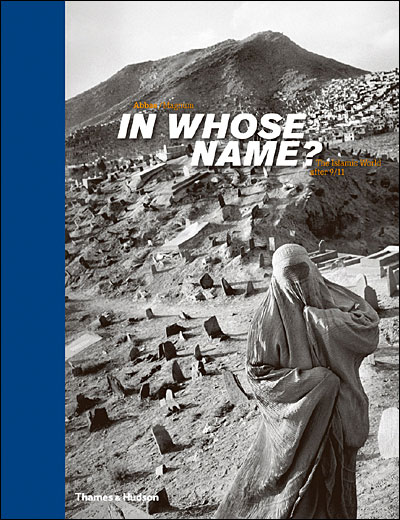 was born in 1944 and is an Iranian photographer known for his photojournalism in Biafra, Vietnam and South Africa in the 1970s. Attar has dedicated his photographic work to the political and social coverage of the wars and revolutions in Biafra, Bangladesh, Ulster, Vietnam, and the Middle East.
was born in 1944 and is an Iranian photographer known for his photojournalism in Biafra, Vietnam and South Africa in the 1970s. Attar has dedicated his photographic work to the political and social coverage of the wars and revolutions in Biafra, Bangladesh, Ulster, Vietnam, and the Middle East.From 1978 to 1980, he photographed the revolution in Iran, and returned in 1997 after a 17 years voluntary exile. His book iranDiary 1971-2002 is a critical interpretation of its history, photographed and written as a personal diary.
From 1987 to 1994 he photographed the resurgence of Islam from the Xinjiang to Morocco. His book and exhibition Allah O Akbar, a journey through militant Islam exposes the internal tensions within Muslim societies, torn between a mythical past and a desire for modernization and democracy. The book draws special attention after the Sept. 11 terror attacks.
.jpg) From 2000 to 2002 he worked on Animism asking the question: In our world defined by science and technology, why do irrational rituals make a strong come-back? He abandoned this project on the first anniversary of the September 11, 2001 terrorist action in New York. His latest book, In Whose Name? The Islamic World after 9/1, is a seven years quest within 16 countries : opposed by governments who hunt them mercilessly, the jihadists lose many battles, but are they not winning the war to control the mind of the people, with the "creeping islamisation" of all Muslim societies?
From 2000 to 2002 he worked on Animism asking the question: In our world defined by science and technology, why do irrational rituals make a strong come-back? He abandoned this project on the first anniversary of the September 11, 2001 terrorist action in New York. His latest book, In Whose Name? The Islamic World after 9/1, is a seven years quest within 16 countries : opposed by governments who hunt them mercilessly, the jihadists lose many battles, but are they not winning the war to control the mind of the people, with the "creeping islamisation" of all Muslim societies?Abbas is presently travelling in the world of Buddhism, photographing with the same skeptical eye.
About his photography Abbas writes:
"My photography is a reflection, which comes to life in action and leads to meditation. Spontaneity – the suspended moment – intervenes during action, in the viewfinder. A reflection on the subject precedes it. A meditation on finality follows it, and it is here, during this exalting and fragile moment, that the real photographic writing develops, sequencing the images. For this reason a writer’s spirit is necessary to this enterprise. Isn’t photography 'writing with light'? But with the difference that while the writer possesses his word, the photographer is himself possessed by his photo, by the limit of the real which he must transcend so as not to become its prisoner."
Opinion
Haunting. The reality of one culture is not the same reality as another culture. Being in a new country is like going to another planet, the system is sometimes completely opposite than one believes it should.
Imagine it this way. Krypton explodes but not before two parents ship their child off in a rocket hoping the child lands in a safe place. The Child lands in California (because Metropolis doesn't exist), grows up, and 'saves the world every day' by beating up bad guys and destroying huge skyscrapers (even on an accident). There would be lots of dead people under building rubble. All in the name of truth and justice...
Now crash land the child in a middle east country where children are raised with guns, still fighting for what they believe is right. No huge skyscrapers but lots of dead people who were killed because the wielder of power believed the other person was wrong and that he needed to show the world real truth and justice...
Who is really right?
I think that is what Attar's photographs and books are all about. To force viewers to look at other cultures in a new, objective light. It is a social realism of 'you are an American so you do American things but if you were raised in the middle east you would do what they do too'.


No comments:
Post a Comment